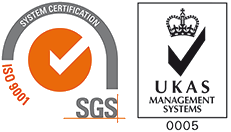Publishing in the Digital Age
The publishing industry and reading behaviors are changing in the Fourth Industrial Revolution. People who work in the publishing industry need to consider how their readers consume content in the Digital Age, what their preference are in literary tastes and book prices. Here is what Professor Jane Friedman had to say on the topic at Knowledge Summit 2017:
I think authors are struggling to compile the terminology and keywords. If you work in publishing for a long time, you have experience and understanding of the issue of category identification, but this is all about traditional books. If you are an author who has not published books before, you will find the issue of categorization and classification completely unnatural for you. So, more market research is needed to determine the best time and method to publish your book. Authors also have an advantage that publishers do not have in that they understand the readers and the way they talk about their books or other similar books. They can choose keywords that will enrich the search for their books and make them show up more effectively in searches on Amazon and other websites.
I think that publishers focus on the issue of classification and categorization. They put their books under the category of ‘General Stories’ to generate new sales. They do not mention anything about the content, characters, or anything targeting a particular reader. Certainly, there are many publishers who are trained in the United States to write editorials in major newspapers, including how to name chapters, write descriptions, and choose keywords.
Recently in the U.S. we are seeing that readers prefer big books, like comic series that are sequential—number one, two, three, and so on. There are many famous series such as Harry Potter, The Divergent, and The Hunger Games. People like these kind of continuing plots that gradually become apparent to the reader. There are also types of long stories, which are popular among readers in Asia, in China more than the U.S.
One of the most reputable publishing houses that conducts research on readers is Jellybooks. Publishers go to Jellybooks with a book slotted for release and they perform tests for readers. As readers begin to read the book on their iPads and other devices, they track them to gather information about the book. Afterward, they relay their findings to the publisher. For example, you may have a real problem after the second chapter as no one finishes any chapters after that. Moreover, they can tell the publisher the behavior of readers and the factors affecting this behavior.
In the U.S. and UK specifically, there is much talk of the comeback of print and a remarkable renaissance in bookshops. This is true to some extent but you should take into account two additional factors: the first is that the price of e-books is very high compared to printed books; the second is that a large segment of the e-book market is not measured so we do not have good data on it. In the U.S. or the UK, we do not know who dominates e-books on Amazon as they disclose no numbers. Moreover, some publishing markets often use non-tracking features because they are subject to the provisions of International Standard Book Numbers (IBSN). So, we have to contend with the so-called shadow market, which occurs especially in the U.S. Some of our assessments suggest that this segment make up about 30 percent of the total book industry in the U.S.
I think that publishers focus on
the issue of classification and
categorization. They put their books
under the category of ‘General
Stories’ to generate new sales
My first wish is for Amazon to become transparent. We want to know all the information about the interaction of readers with books and how they move from one book to another. I think that search tools right now are very basic for readers. This does not benefit anyone at all. They involve some randomness that rely on keywords and categories provided by the reader. However, they are inadequate. There is also a real problem in the U.S. and the UK where people put e-books on Amazon and other sites that are not actual books. This complex process negatively affects reader search engines.
I think there are no studies about how reading behaviors have changed due to audio books, but this is certainly a tangible phenomenon. Audio book sales have increased in the U.S. by 30-40 percent over the past three years but they still account for a very small percentage of the total mar¬ket, just one or two percent. There is more focus in the U.S. on audio books, including using radio as a mar¬keting tool to motivate people to buy them. There is also cooperation with Amazon in this area.
Sales of fictional literature have slightly decreased in recent years, while sales have increased in other areas. This indicates that search tools are probably not good enough or prices not suitable, that prices are not being determined in a way that encourages people to take the risk. There is usually a dynamic pric¬ing process; the higher the prices, the higher the interest. When prices are low, then there is a need to encourage more demand.
About Jane Friedman
Professor of Writing, Media, and Publishing at the University of Cincinnati and University of Virginia. Ms. Friedman has served on panels for the National Endowment for the Arts and the Creative Work Fund, is a regular columnist for Publishers Weekly and maintains an award-winning blog for writers (JaneFriedman.com).








